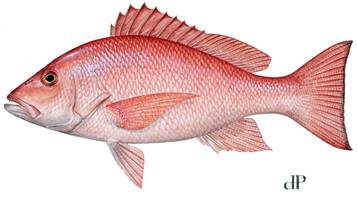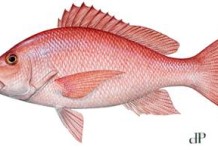The Coastal Conservation Association on Wednesday announced that it filed a federal lawsuit against the implementation of a red snapper plan in the Gulf of Mexico that takes a percentage of the recreational quota and reserves it for use by the charter and for-hire fishing industries.
In a statement CCA cited Amendment 40, which was approved by the Gulf of Mexico Fishery Management Council in a 10-7 vote in October, as being highly detrimental to the future of sport fishing.
“Amendment 40 embodies everything that is wrong with federal management of our marine resources,” said Bill Bird, chairman of CCA’s National Government Relations Committee, in the statement issued by the group. “It is completely out of step with this nation’s heritage of wildlife resource management. It has been overwhelmingly opposed at every step in the process, but a very small minority has been allowed to manipulate the system to their personal advantage.”
In its lawsuit filed in U.S. District Court for the Eastern District of Louisiana lawsuit, CCA charges that Amendment 40 constitutes agency action that is “arbitrary and capricious, an abuse of discretion, not in accordance with law and in excess of statutory jurisdiction, authority or limitations.”
Last year’s recreational Gulf snapper season was only nine days in federal waters. In Texas, federal waters begin nine nautical miles from the coast and extend 200 nautical miles.
Red snapper frameworks are managed by the Gulf of Mexico Fishery Management Council under the National Marine Fisheries Service, but a recent pact between Gulf states including Texas is based upon transferring management authority away from the council and into the touted Gulf States Red Snapper Management Authority. States would have sole discretion in developing their own management plans but the others still must sign off under the agreement.
Red snapper fishing long has been a contentious topic after the council previously announced and adjusted red snapper season for Gulf states.
Texas, Louisiana and other Gulf states previously pushed back against proposed federal rules on red snapper, urging that snapper regulation be left up to the discretion of states, citing scientific research supporting the stance.
The length of the federal recreational season in the Gulf is determined by the amount of the quota, the average weight of fish landed and estimated catch rates over time. NOAA Fisheries is responsible for ensuring the entire recreational harvest, including harvest in state waters, does not exceed the recreational quota. Therefore, if states establish a longer season or a larger bag limit for state waters than the federal regulations allow in federal waters, the federal season must be adjusted to account for the additional harvest expected in state waters.
More than 95 percent of the red snapper landed in Texas come from federal waters, according to TPWD figures. Most of that catch – about 80 percent – comes from head boats, also known as “party boats,” which take out numerous paying clients offshore. These boats account for roughly 200,000 angler fishing trips annually, according to TPWD figures.
The recreational red snapper bag limit in federal waters is two fish at least 16 inches in length. The bag limit in Texas waters is four fish, at least 15 inches long, with a year-round season.





















